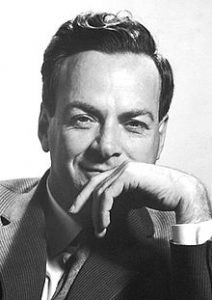Peter Woit in Not Even Wrong:
 The past month has seen quite a few events and articles celebrating the 100th anniversary of Richard Feynman’s birth (see for example here, here, here and here). Feynman was one of the great figures of twentieth century physics, with a big intellectual influence on me and on many generations of particle theorists. In particular, his development of the path integral formulation of quantum mechanics and the Feynman diagram method for calculating and understanding what quantum field theories are telling us are at the center of how we have learned to think about fundamental physics and apply it to the real world.
The past month has seen quite a few events and articles celebrating the 100th anniversary of Richard Feynman’s birth (see for example here, here, here and here). Feynman was one of the great figures of twentieth century physics, with a big intellectual influence on me and on many generations of particle theorists. In particular, his development of the path integral formulation of quantum mechanics and the Feynman diagram method for calculating and understanding what quantum field theories are telling us are at the center of how we have learned to think about fundamental physics and apply it to the real world.
When I first started studying physics, in the seventies, Feynman was a major figure to physicists, but not that well-known outside the subject. After the 1985 appearance of the book of anecdotes “Surely You’re Joking, Mr. Feynman!” and his 1986 role in the report on the Challenger disaster (followed by more anecdotes in the 1988 “What Do You Care What Other People Think?”) Feynman became a huge public figure. The Physics section of any book store that carried science books would often have nearly a whole shelf of books by and about him, with the only competition the shelf of books about Einstein (the Hawking shelf didn’t get going until a bit later).
I avidly read the Feynman anecdote books when they came out and was suitably entertained, but I also found them a bit disturbing.
More here.
